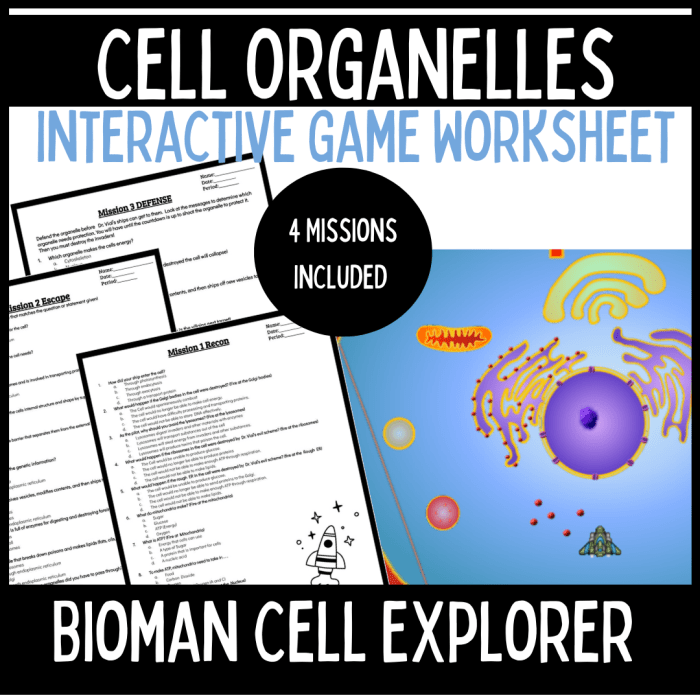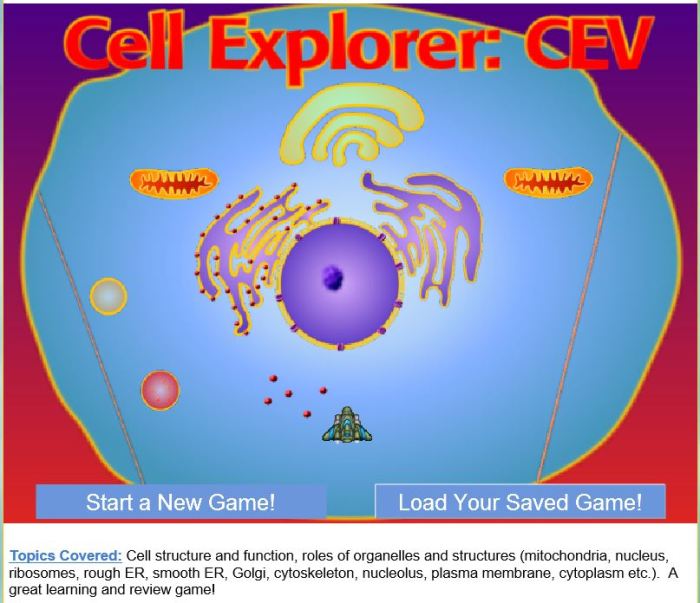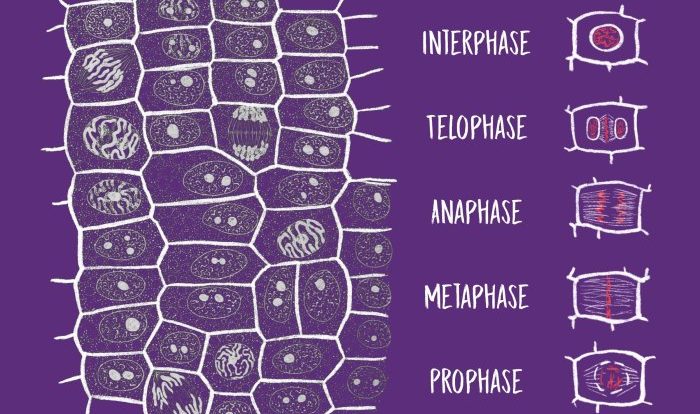Dive into the fascinating world of cells with the Cell Explorer Game Answer Key, your ultimate guide to understanding the building blocks of life. Discover the inner workings of cells, unravel the mysteries of photosynthesis and cellular respiration, and explore the captivating world of cell division and genetics.
Prepare to embark on an educational adventure that will ignite your curiosity and deepen your understanding of the microscopic wonders that make up all living organisms.
Cell Explorer Game Basics

The objective of the Cell Explorer game is to guide a tiny explorer through the intricate world of a cell. Along the way, players encounter various organelles and molecules, learning about their functions and importance.The game features multiple levels, each with its own unique challenges.
Players must navigate through mazes, avoid obstacles, and solve puzzles to progress. The interface is user-friendly, with intuitive controls and clear instructions.
Navigating the Game’s Interface
The game’s interface is designed to provide players with a seamless and enjoyable experience. The following tips will help you navigate the game:
- Use the arrow keys to move the explorer.
- Press the spacebar to jump.
- Collect items by touching them.
- Use the minimap to track your progress.
- Check the inventory to view collected items.
Cell Structure and Function: Cell Explorer Game Answer Key

Cells are the fundamental building blocks of life, and their structure and function are essential to their survival. Cells come in various shapes and sizes, but they all share a common set of organelles, which are specialized structures that perform specific functions.
The cell membrane is a thin layer that surrounds the cell and controls what enters and leaves the cell. It also protects the cell from its surroundings.
Key Organelles and their Functions
Some of the key organelles found in a typical cell include:
- Nucleus:The nucleus is the control center of the cell. It contains the cell’s DNA, which is the genetic material that determines the cell’s characteristics.
- Mitochondria:Mitochondria are the powerhouses of the cell. They produce energy that the cell needs to function.
- Ribosomes:Ribosomes are responsible for protein synthesis. They read the cell’s DNA and assemble amino acids into proteins.
- Endoplasmic reticulum:The endoplasmic reticulum is a network of membranes that folds and transports proteins.
- Golgi apparatus:The Golgi apparatus is a stack of flattened membranes that modifies and packages proteins for secretion from the cell.
- Lysosomes:Lysosomes are small organelles that contain digestive enzymes. They break down waste products and recycle them into useful materials.
- Vacuoles:Vacuoles are small sacs that store materials for the cell.
These organelles work together to ensure that the cell has the materials it needs to survive and function properly.
If you’re looking for help with your Cell Explorer game, there are many resources available online. One great resource is The Iron Dragon Never Sleeps , which provides detailed walkthroughs and tips for every level. With the help of this resource, you’ll be able to conquer any challenge the game throws your way and become a master Cell Explorer!
Cell Processes

Cell processes are the various chemical reactions that occur within cells to maintain life. These processes include photosynthesis, cellular respiration, and the role of enzymes.
Photosynthesis
Photosynthesis is a process that occurs in plant cells and uses sunlight to convert carbon dioxide and water into glucose and oxygen. This process is essential for life on Earth as it provides the oxygen we breathe and the food we eat.The
process of photosynthesis can be summarized by the following equation:
CO2 + 6H2O + sunlight → C6H12O6 + 6O2
Cellular Respiration
Cellular respiration is a process that occurs in both plant and animal cells and uses glucose to produce energy. This process is essential for life as it provides the energy that cells need to function.The process of cellular respiration can be summarized by the following equation:C6H12O6 + 6O2 → 6CO2 + 6H2O + energy
Enzymes
Enzymes are proteins that facilitate chemical reactions within cells. They do this by lowering the activation energy of the reaction, which is the amount of energy that is required for the reaction to occur. Enzymes are essential for life as they allow cells to carry out the chemical reactions that are necessary for life.
Cell Division and Genetics

Cell division is a crucial process that ensures the growth, repair, and reproduction of living organisms. It involves the precise duplication and distribution of genetic material to daughter cells.
Mitosis
Mitosis is the primary form of cell division in somatic (non-reproductive) cells. It consists of several distinct stages:
- Prophase:Chromosomes condense and become visible. The nuclear envelope breaks down.
- Metaphase:Chromosomes align at the center of the cell, forming a metaphase plate.
- Anaphase:Sister chromatids of each chromosome separate and move to opposite poles of the cell.
- Telophase:Chromosomes reach the poles and the nuclear envelope reforms. Cytokinesis (division of the cytoplasm) follows.
Role of Chromosomes and DNA
Chromosomes are structures within the cell nucleus that contain DNA, the genetic material. Each chromosome consists of two identical sister chromatids. During mitosis, DNA replication ensures that each daughter cell receives an identical copy of the genetic material.
Genetic Inheritance
Genetic inheritance refers to the passing on of genetic traits from parents to offspring through cell division. Each parent contributes half of the genetic material to their offspring. During meiosis (cell division in reproductive cells), the number of chromosomes is halved to ensure that offspring have the correct number of chromosomes.
Cell Applications

Cells have a wide range of applications in various fields, including regenerative medicine, biotechnology, and scientific research.
Stem Cells in Regenerative Medicine, Cell explorer game answer key
Stem cells are unspecialized cells that have the potential to develop into various types of specialized cells. They are used in regenerative medicine to repair damaged tissues and organs. For example, stem cells can be used to treat spinal cord injuries, heart disease, and burns.
Cells in Biotechnology
Cells are also used in biotechnology to develop new medical treatments. For example, cells can be used to produce antibodies, vaccines, and enzymes. Cells can also be engineered to produce specific proteins or chemicals, which can be used to treat diseases or create new materials.
Cell Culture Techniques in Scientific Research
Cell culture techniques are used in scientific research to study cells in a controlled environment. Cells can be grown in the laboratory in petri dishes or flasks. This allows scientists to study cell growth, division, and differentiation. Cell culture techniques are also used to test the effects of drugs and toxins on cells.
FAQ Section
What is the objective of the Cell Explorer game?
To explore the inner workings of cells and learn about their structure, function, and processes.
What are the key organelles found in a typical cell?
Nucleus, mitochondria, ribosomes, endoplasmic reticulum, Golgi apparatus, lysosomes, vacuoles, and cell membrane.
How does photosynthesis occur in plant cells?
Plants use sunlight, carbon dioxide, and water to produce glucose and oxygen through a series of chemical reactions.
What is the role of enzymes in cells?
Enzymes are proteins that speed up chemical reactions within cells.
How is genetic inheritance passed on through cell division?
DNA, which carries genetic information, is duplicated and passed on to daughter cells during cell division.

